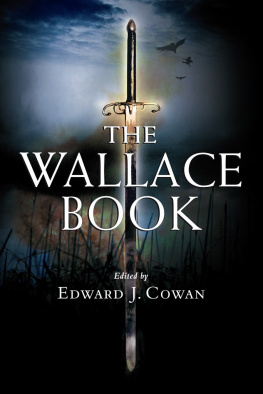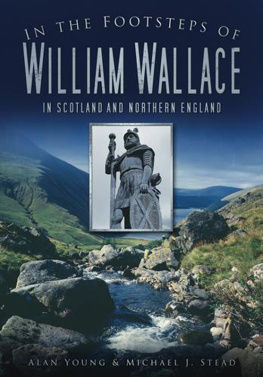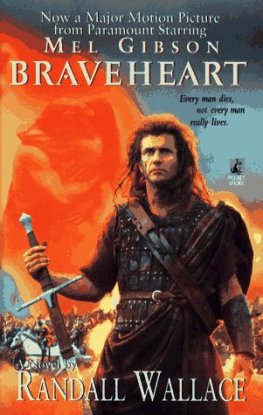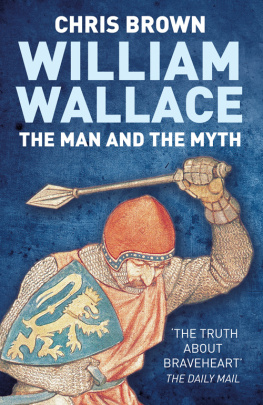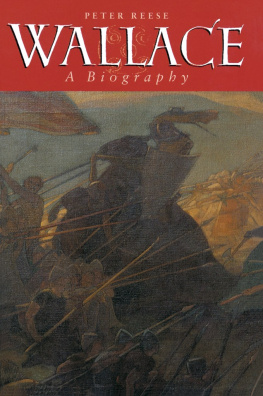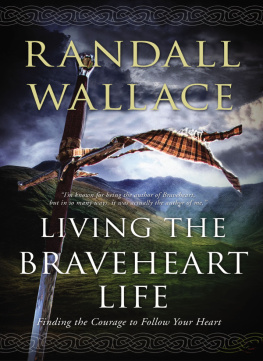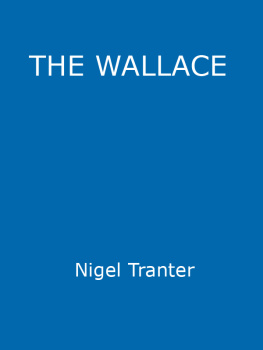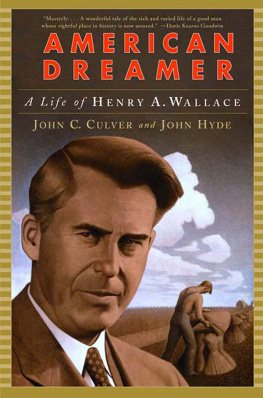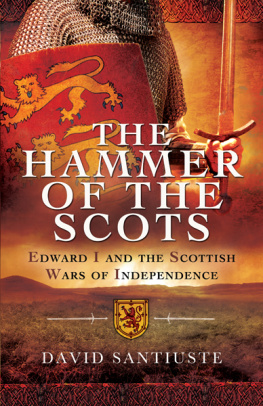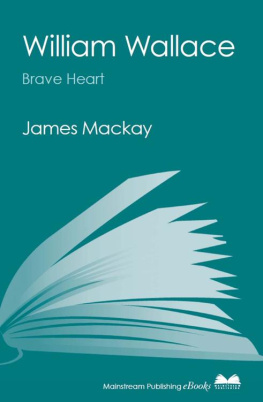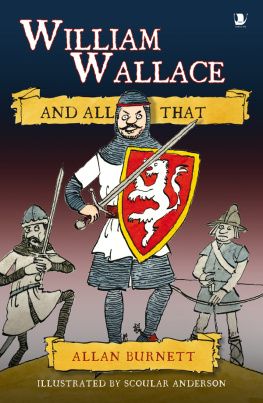The Wallace Book

This eBook edition published in 2012 by
Birlinn Limited
West Newington House
Newington Road
Edinburgh
EH9 1QS
www.birlinn.co.uk
First published in 2007 by John Donald
an imprint of Birlinn Ltd
The contributors 2007
All rights reserved. No part of this publication may be reproduced, stored or transmitted in any form without the express written permission of the publisher.
ISBN: 978-0-85976-652-4
eBook ISBN: 978-0-85790-494-2
British Library Cataloguing-in-Publication Data
A catalogue record for this book is available from the British Library
Contributors biographies
Edward J. Cowan is Professor of Scottish History at the University of Glasgow and Director of the University of Glasgows Crichton Campus in Dumfries
Fiona Watson is Research Fellow in History, University of Dundee, and
Research Associate, UHI Millennium Institute
A. A. M. Duncan is Emeritus Professor of Scottish History at the University of Glasgow
Michael Prestwich is Professor of Medieval History at the University of Durham
Alexander Broadie is Professor of Logic and Rhetoric at the University of Glasgow
Alexander Grant is Reader in Medieval British History at the University of Lancaster
Felicity Riddy is Deputy Vice-chancellor and Professor of Literature, University of York
Elspeth King is Director of the Stirling Smith Art Gallery and Museum
Colin Kidd is Professor of Modern History, University of Glasgow
James Coleman is a PhD graduate of the University of Glasgow
David H. Caldwell is the National Museums of Scotland Keeper of Scotland and Europe
Richard J. Finlay is Professor of History at the University of Strathclyde
Lizanne Henderson is Lecturer in History at the University of Glasgows Crichton Campus in Dumfries
Illustrations
William Wallace: The Choice of the Estates
Edward J. Cowan
At Wallace name what Scottish blood
But boils up in a spring-tide flood!
Oft have our fearless fathers strode
By Wallace side,
Still pressed onward, red-wat shod [ankle deep in blood],
Or glorious dyd.
Robert Burns
For 700 years William Wallace has been revered as the consummate, incomparable Scottish hero yet, remarkably for such a paragon, almost all that is known about him contemporaneously derives from enemy sources. but this was a man who was to initiate resistance against foreign occupation and who would lead the Scottish army to astonishing victory against the odds at Stirling Bridge. Following the battle, the supposed outlaw demonstrated his commercial acumen by informing German cities in the Hanseatic League that Scotland was once again open for business. As Guardian of the kingdom, he exhibited his not inconsiderable abilities in governance. It cannot be denied that bloodlust and hatred shaped his achievements as a warrior, but he was also a multilingual diplomat who was sent on embassies to France and Rome. In the anguish and painful hell of his brutal execution at Smithfield on 23 August 1305 he met his epiphany. Having lived, struggled and died, he entered the ranks of the immortals to become the stuff of legend and the greatest hero in all Scottish history.
The earliest Scottish narrative to cover the period of Wallaces career was Gesta Annalia, made more poignant by the likelihood that St Bartholomews Church was probably the last thing he saw on this earth.
The first vernacular account of the heros exploits was presented in Andrew of Wyntouns Original Chronicle of Scotland composed about 1420, in often tedious rhyming couplets. A run-in with the English led to the sheriff of Lanark killing Wallaces lemman, or mistress, whose death was duly avenged by her lover who swiftly became leader of the resistance. As in Forduns account, he lost Falkirk through the treachery of Bruce and the Comyn faction. Supported by the leal commons of Scotland he had to live simply as an outlaw before his tragic end. According to Wyntoun, Wallace was worthy of a great book, a task for which he himself had neither the wit nor the leisure.
The full-blown legend first appears in Walter Bowers Scotichronicon, written in the 1440s, which describes him as a tall man with the body of a giant, pleasing in appearance but with a wild look, broad in the hips, with strong arms and legs, a most spirited fighting man. God had distinguished him and his changing features with a certain good humour, had so blessed his words and deeds with a certain heavenly gift, that by his appearance alone he won over to himself the grace and favour of the hearts of all loyal Scots. And this is not surprising, for he was most liberal in his gifts, very fair in his judgments, most compassionate in comforting the sad, a most skilful counsellor, very patient when suffering, a distinguished speaker, who above all hunted down falsehood and deceit and detested treachery. He was, in short, a man successful in everything.
After Stirling Bridge he brought the English to heel, mounting devastating raids on Northumbria. Intoxicated by a stream of envy, however, the great ones of the kingdom plotted against Wallaces cause and the freedom of the country, although he retained the support of the ordinary folk and Complicity between Bruce and the Comyns led to Scottish defeat at Falkirk, after which Wallace abdicated as Guardian, choosing to throw in his lot with the common people. He stood for the liberty of his kingdom and would obey none but the king of Scots or his lieutenant. Indeed, he always consistently claimed to be acting in the name of the deposed King John (Balliol 129295), by Gods grace illustrious king of Scotland, by the consent of the community of the realm. Wallace was a committed monarchist; radical although he undoubtedly was, by no stretch of the imagination could he be described as a democrat or a republican. It is, however, remarkable, as well as diagnostic, that Bower, who strove to produce the page written in a firm fashion and unadorned, not bound with the knots of flowery eloquence, should have abandoned his own rules and objectives when confronted by the towering figure of Wallace. The latters legend was as much a product of the chroniclers as it was of the poets. Three of the contributors to this volume explore the sources for Wallaces career in great detail. Fiona Watson, who has studied this period in considerable depth, lays out what historically is actually known about the hero. Archie Duncan, who has pondered these matters much longer than anyone else in the volume, presents an important analysis of the few surviving documents with which Wallace had a personal connection. Alexander Grant minutely and revealingly explores Wallaces career in a medieval context, while Michael Prestwich sagely examines Wallaces greatest victory from an English perspective.
The Wallace story acquired as much obfuscation as it did elaboration with the appearance, around 1478, of Harys Wallace, pronounced by a recent editor the greatest single work of imagination in early Scots poetry.lifelong blindness and whose first name may not even have been Hary. Furthermore, he purported to base his effusion upon a Latin work by Master Blair, a supposed contemporary of, and chaplain to, the hero, although in all probability neither Blair nor his book ever existed. Stirling Bridge does not occur until Book 7 of the twelve books that comprise the poem, the first six being occupied with various fights and battles with the English, climaxing in the slaughter of Wallaces wife, said to have been a daughter of Hew Braidfute of Lamington in Lanarkshire. In general, Wallaces activities were greatly elaborated by Hary, who also inserted additional battles (such as that at Biggar) for his hero to win, or English atrocities (such as the Barns of Ayr episode) for Wallace to revenge. Neither Hary nor any of the other medieval commentators made any bones about the fact that Wallace was utterly ruthless in his treatment of the English and recalcitrant Scots. No one pretended that he was other than a man of blood and, indeed, they were rather impressed by that side of his character. Felicity Riddy considers the poem in the context of, and as part of, late fifteenth-century Scottish medieval literary production, which manifests something of a renaissance, but she also asks why Harys work remained so central to the Scottish popular tradition for so long. A book about Wallace may not be the obvious place to expect a contribution on philosophy, but Alexander Broadie, with characteristic learning, explores the search for independence which tantalisingly, if tenuously, links the careers of Duns Scotus and Wallace.
Next page
